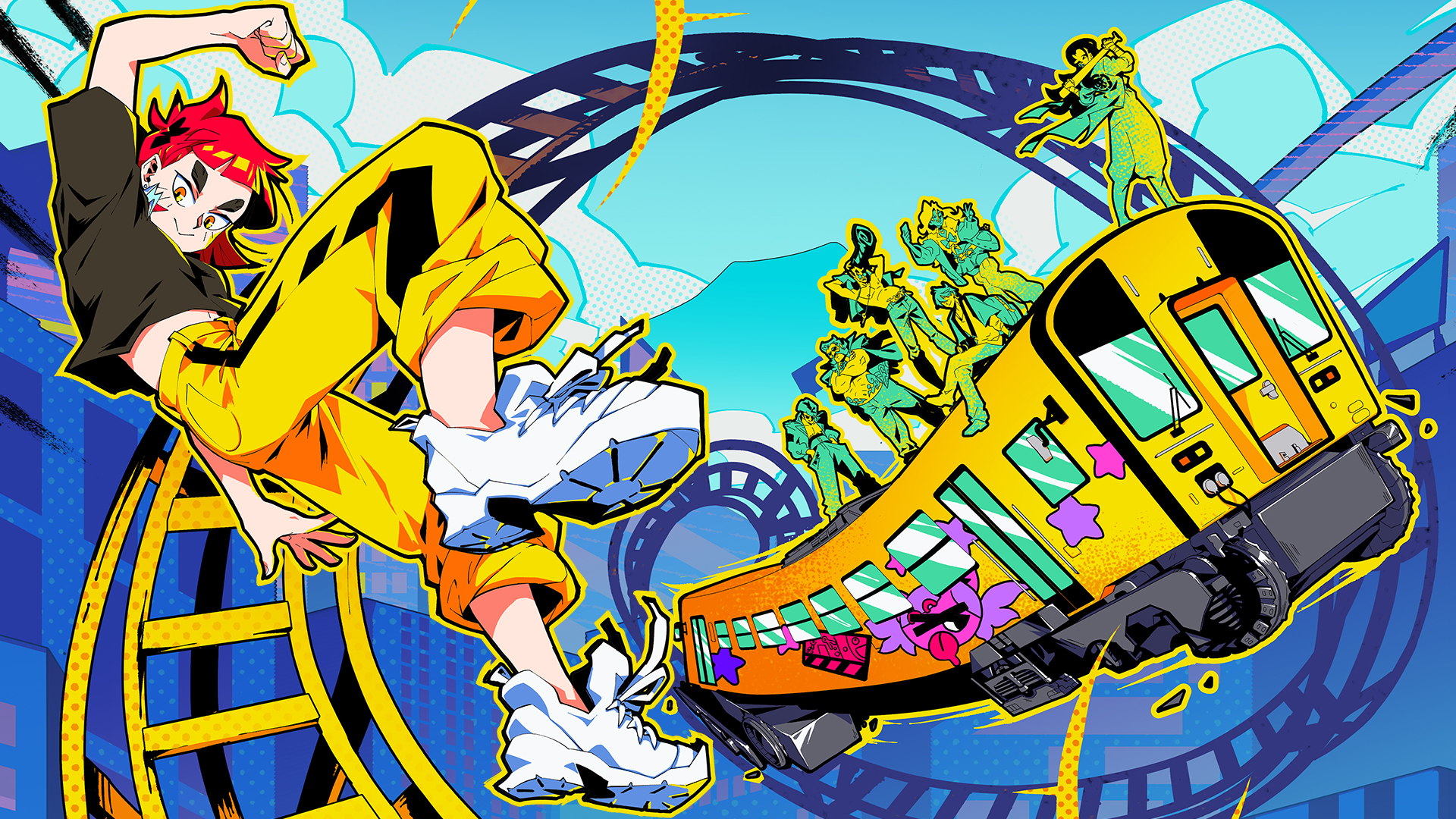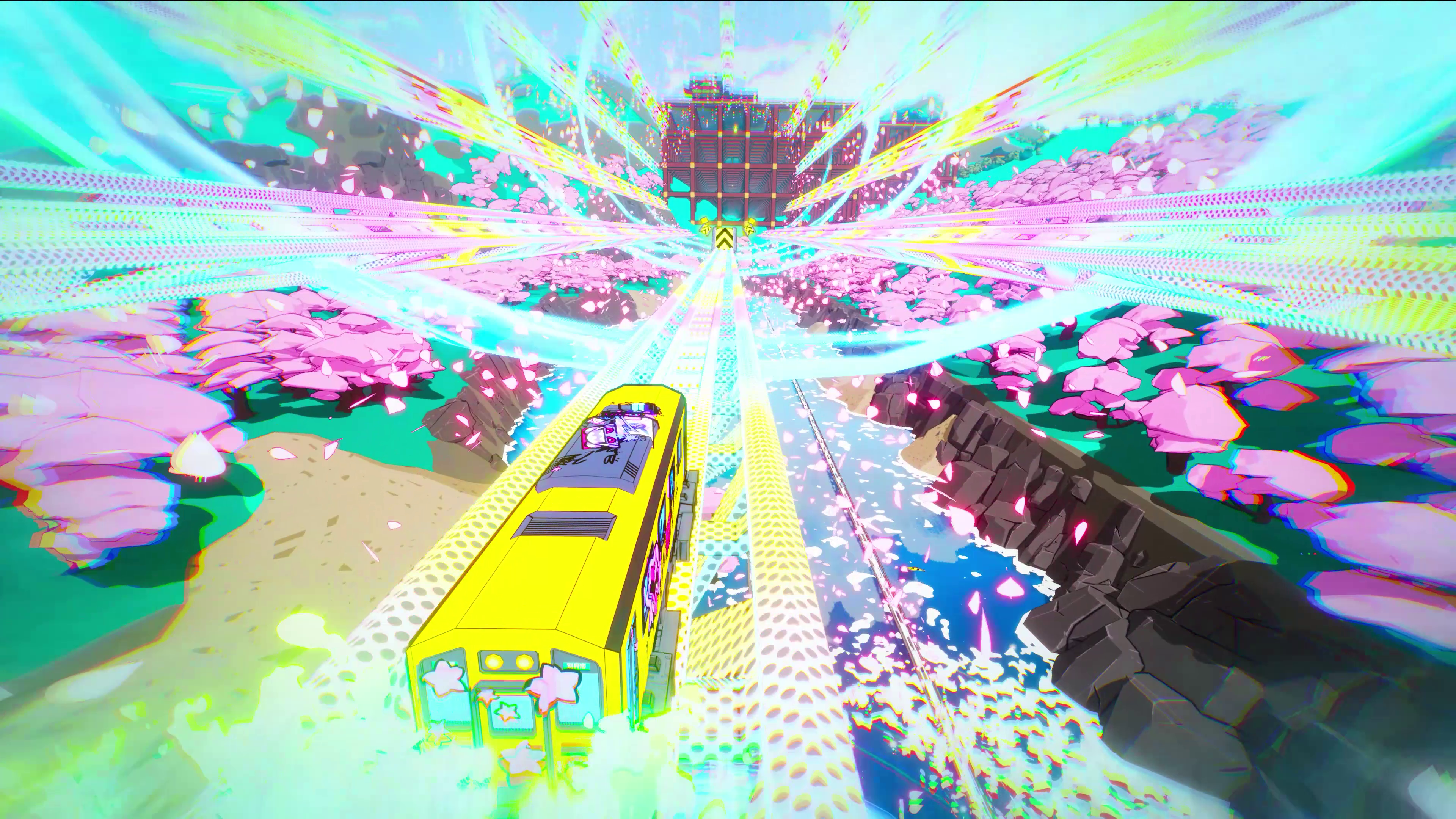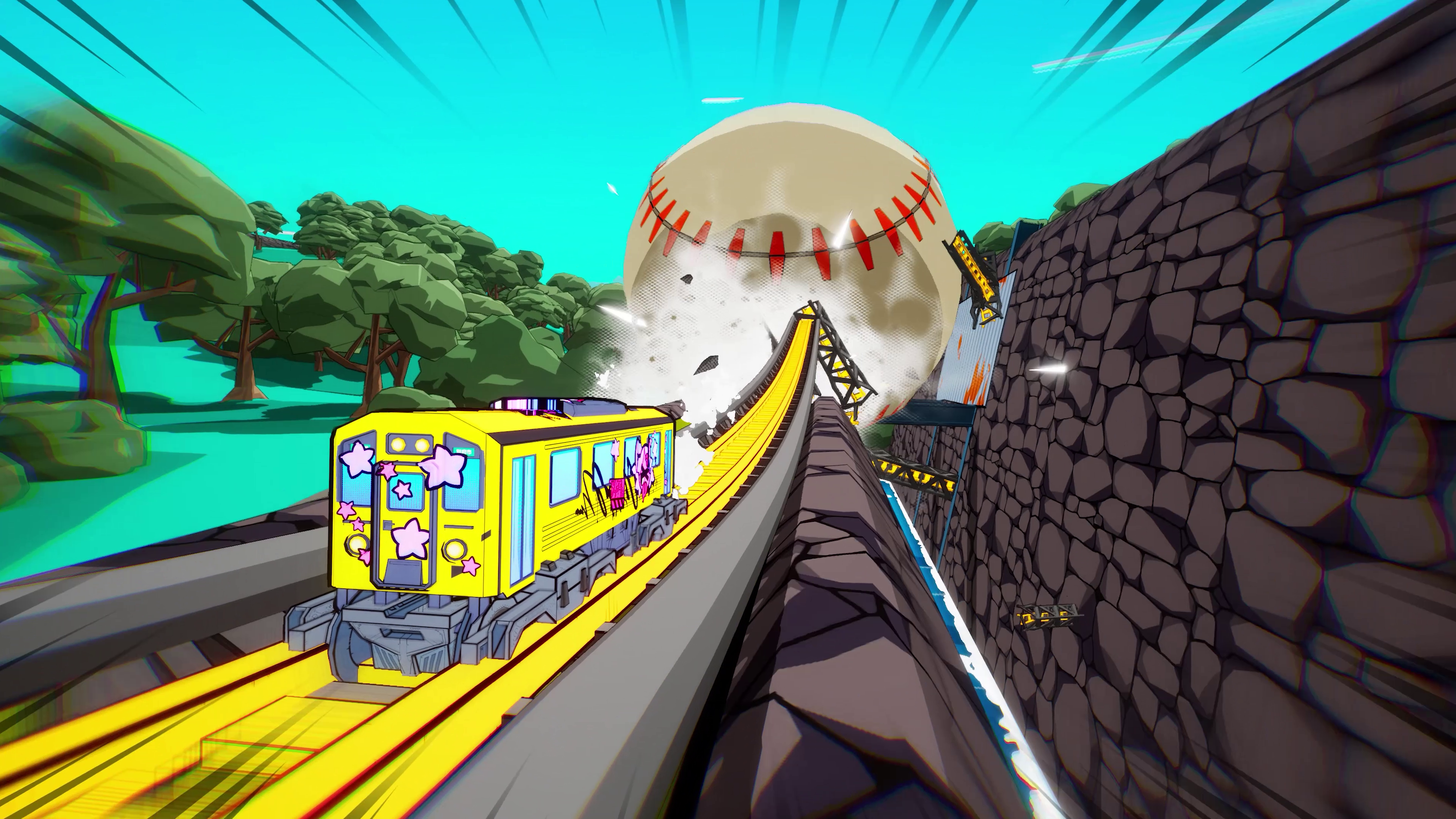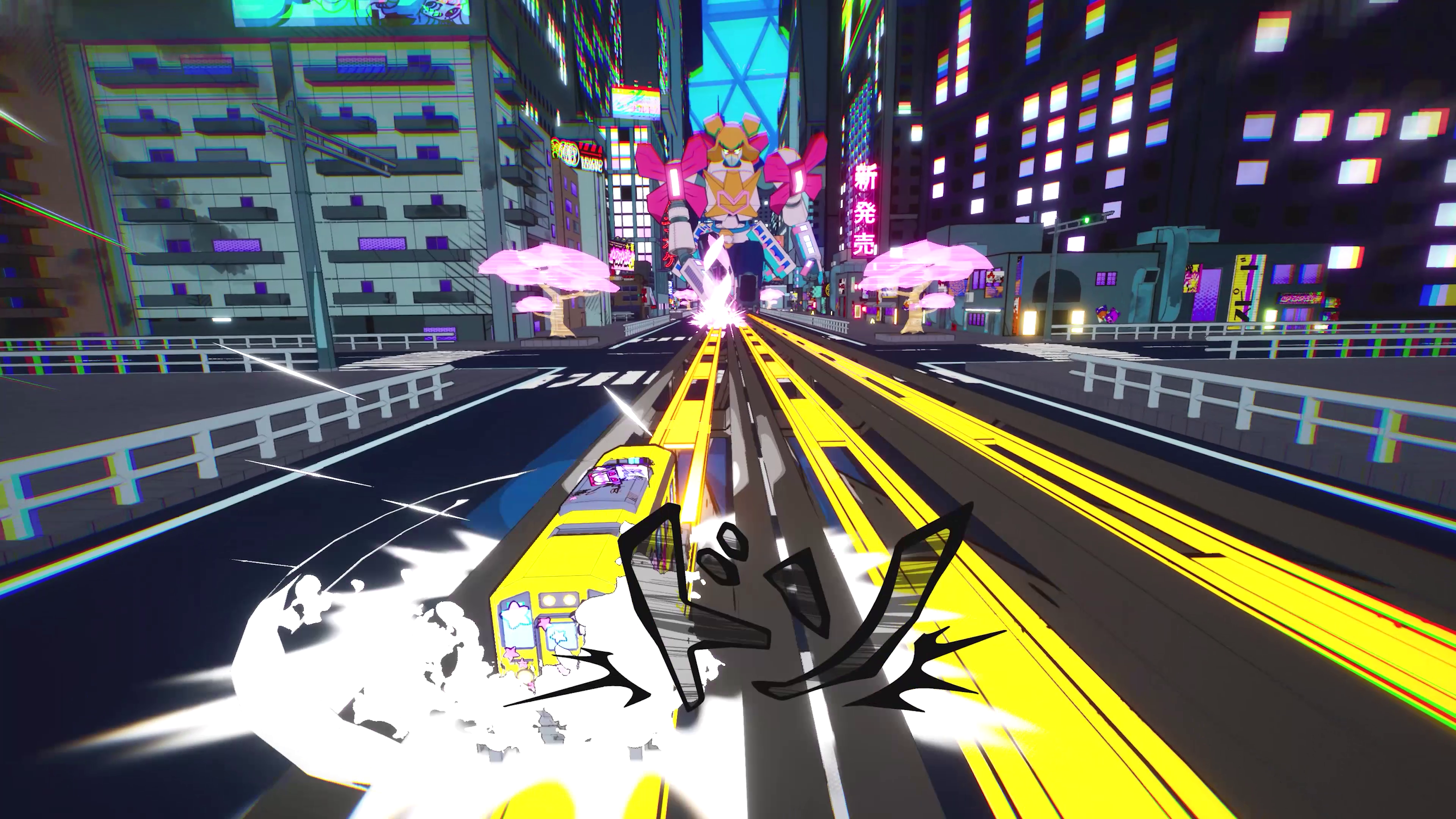Indie game Denshattack turns Japan’s iconic train culture into pure pop-art motion
Undercoders' David Jaumandreu on faithfully mashing up Japanese train culture with Jet Set Radio's style.

Trains are pretty great. They reliably get you from A to B and often with great scenic views, and are iconic in pop cultural moments from thrilling getaways and heists in Westerns to the Hogwarts Express that takes its passengers to their wizarding school. But you probably never imagined they could be used as the means of a future extreme sport, as is the premise for Denshattack!
Specifically, the title refers to Japanese trains, or 'Densha' as they are referred to in Japan, which have been the subject of games in the past, most notably the arcade train simulation series Densha de Go! Of course, simulation is usually what you might expect from trains, such as the Train Sim World series, whose developers and fans take it pretty seriously. But according to Denshattack's game director, David Jaumandreu, the game's take on its subject came from quite a simple, silly spark of inspiration that the team just ran with.
"We were messing around with a toy model of a Japanese train, pretending it was a finger skateboard," he tells me. "We suddenly thought: what if trains could flip, grind, and pull off tricks across the city? It sounded pretty goofy at first, but once we started prototyping, it turned out to be surprisingly fun!"

Tony Hawk with trains
The game then plays similarly to Tony Hawk Pro Skater, except you're in this dystopian future where you salvage abandoned trains and drive them in a ridiculous fashion where they can do spins, flips, jumps, and wall-runs, almost like controlling a massive skateboard, though still staying on rails like a train does. It may sound like a big joke game with a single punchline, but Jaumandreu is earnest about his fascination not just with Japanese trains but the culture.
"The shapes, the colours, the names, the logos – Japan has built this whole visual identity around its railway system and we find it incredibly appealing," he explains. "It’s not limited to the trains themselves. Everything that surrounds them adds to the charm: the route maps, station layouts, eki bentos (station lunch boxes), the jingles, and departure melodies. It all creates this wonderful and unique aesthetic."
There's also a reverence for Japanese culture and Japan itself that the Barcelona-based indie studio Undercoders wants to faithfully capture, given that the game will also have you driving your trains across the country, from the southern island of Kyushu all the way up to the north of Hokkaido.
"Each level takes you through one of Japan’s prefectures, roughly following the existing local rail networks," Jaumandreu adds. "All of the levels are hand-crafted to capture the atmosphere of each region, not just through landmarks and recognisable architecture, but also in the geography, landscapes, and even soundscapes. Of course, everything is adapted to be ridden at high speed and to feel like a giant skate park!"
Daily design news, reviews, how-tos and more, as picked by the editors.

Harnessing Unreal Engine 5
Since Denshattack is as far as you can get from a simulation, it also felt appropriate to go for a more stylised aesthetic. Given Undercoder's prior experience with Unreal Engine, Jaumandreu adds that developing the game with Unreal 5 was a natural choice, even if you might assume the engine is often chosen for its capacity for ultra-realistic graphics.
"[Unreal 5's] powerful shader system really helped us achieve the stylised look we were going for, and the particle engine was key in bringing Denshattack to life," says Jaumandreu. "From our experience, UE5 is a very versatile tool that can handle almost any visual style, as proven by games like Hi-Fi Rush, Sea of Thieves, and Borderlands."
With a cel-shaded aesthetic, it's no surprise that cult classic Jet Set Radio, about stylish characters skating in Japan, was a huge inspiration, but Denshattack's influences span across other facets of Japanese culture too. "We’ve pulled inspiration from all over Japanese pop culture, from classic shonen-style characters to retrofuturistic cityscapes," Jaumandreu says, citing Initial D, One Piece, Air Gear, Akira, and Persona as examples.

The trick to train animation
There's certainly a manga influence with its human characters also in the story, so far only represented in portrait form, but ultimately, it all has to come back to the trains. So even though the gameplay may be influenced by trick-based skating games where you're controller a character, the train as the avatar is actually like a car in a racing game, so the focus has been on ensuring the trains have a lot of variety, with multiple layers of customisation to unlock and choose from.
"We’ve built the train models to be expressively animated, almost like anime characters!" Jaumandreu explains. "By twisting and deforming their bodies in response to tricks and moves, they convey the same kind of personality and energy you’d expect from a human skater. The same applies to the bosses and other mech designs that we’re putting into the game and want to be as expressive as they can!"
Bosses and mechs in a train-flipping game? I'm still trying to process how this works in an already bizarre concept, but I can't wait to find out.
Denshattack releases for PS5, Xbox Series X/S (including Xbox Game Pass), and PC in 2026. Follow the team at the Undercoders' website.

Alan Wen is a freelance journalist writing about video games in the form of features, interview, previews, reviews and op-eds. Work has appeared in print including Edge, Official Playstation Magazine, GamesMaster, Games TM, Wireframe, Stuff, and online including Kotaku UK, TechRadar, FANDOM, Rock Paper Shotgun, Digital Spy, The Guardian, and The Telegraph.
You must confirm your public display name before commenting
Please logout and then login again, you will then be prompted to enter your display name.
